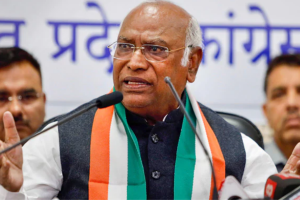The tragic stampede at New Delhi Railway Station, which claimed at least 18 lives and left many injured, is yet another grim reminder of the urgent need for better crowd management and safety measures in India’s railway system. Overcrowding at railway stations is a longstanding issue, yet little has been done to implement effective solutions. The chaos that unfolded was not an isolated event but part of a recurring pattern of poor planning, inadequate infrastructure, and a lack of proactive measures to prevent such disasters. The stampede occurred after two delayed trains caused congestion at the station while a third train, bound for Prayagraj for the ongoing Kumbh Mela, was waiting to depart.
The rush of passengers trying to board and navigate through the overcrowded station created a deadly situation. Reports indicate that the immediate trigger was a passenger slipping on the stairs, which set off a chain reaction of panic as people pushed forward, leading to a stampede on staircases, footbridges, and platforms. Indian Railways re – mains the lifeline of the country, transporting millions daily. Trains are the most affordable long-distance travel option, making stations some of the most congested public spaces in the country. During peak season, festival rush, or when there are delays, the number of passengers far exceeds the capacity of platforms and staircases, turning them into dangerous bottlenecks. The fact that such a tragic incident occurred due to delays and poor crowd control is a testament to the system’s failure. Eyewitness accounts reveal the complete lack of preparedness of railway authorities.
Advertisement
People trapped on the staircases and footbridges struggled to breathe, with no immediate intervention from security personnel. Delays and the urgency of passengers trying to reach the Kumbh Mela ~ a pilgrimage that draws millions ~ exacerbated the congestion. Despite past tragedies, authorities have not implemented real-time crowd monitoring, designated entry-exit points, or emergency evacuation protocols. It is alarming that major railway stations, which handle lakhs of passengers daily, still lack the technological and logistical framework to prevent such incidents. CCTV surveillance and security personnel exist, but their role is often limited to post-incident investigations rather than proactive intervention. Digital crowd management systems, automated alerts, and better coordination between railway and law enforcement agencies are desperately needed. Beyond prevention, the response to such incidents also needs urgent reform.
Survivors and families of victims reported that medical assistance was slow to arrive, and hospitals were overwhelmed. Reports of multiple victims crammed onto single hospital beds highlight the deeper inadequacies of the public healthcare system when it comes to handling mass casualty events. Compensation for victims, while necessary, does little to address the underlying issues. Authorities must prioritise investment in safety measures over reactive financial aid. Every major railway hub in India must be equipped with emergency medical units, designated safe zones, and an adequate security presence trained to handle stampede situations. Indian Railways must acknowledge that overcrowding is a safety hazard and treat it as a priority. Above all, the state must treat passengers as humans











